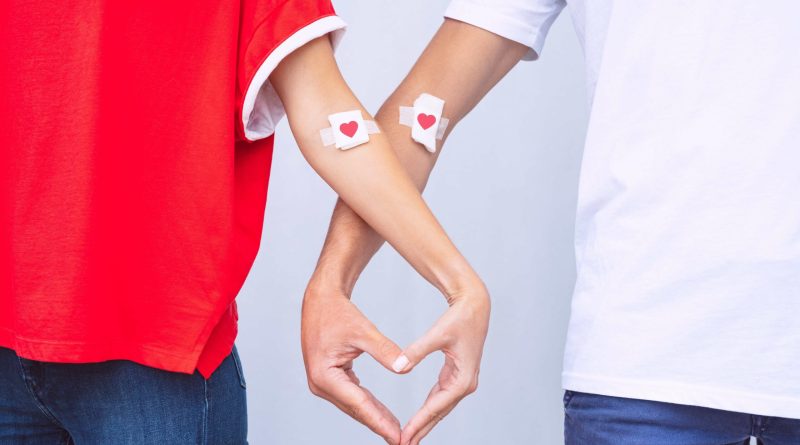A Legacy of Lifesaving
World Blood Donor Day, celebrated annually on June 14, honours the millions of people who donate blood to provide a lifeline to those in need. This year marks the 20th anniversary of the event, highlighting two decades of significant contributions from donors worldwide.
By Saima Wazed
World Blood Donor Day (WBDD), celebrated annually on June 14, is a global tribute to salute and thank those who donate blood voluntarily and unpaid, providing others with the gift of life. This day marks the birthday anniversary of Karl Landsteiner, the scientist who discovered the ABO blood group system, revolutionising the practice of blood transfusion and saving countless lives.
This year commemorates the 20th anniversary of WBDD, first organised in 2004 by the World Health Organization (WHO) in partnership with the International Federation of Red Cross and Red Crescent Societies, the International Federation of Blood Donor Organizations, and the International Society of Blood Transfusion. The theme for this year, ‘Celebrating 20 Years of Giving: Thank You Blood Donors!’ reflects on the significant impact of two decades of voluntary blood donations, emphasising the invaluable contributions of blood donors worldwide.
The Vital Role of Blood Transfusion
Blood transfusions are crucial in healthcare, offering essential support to patients with life-threatening conditions. They not only improve the quality of life and longevity of patients but are also indispensable in maternal and childcare, as well as during complex medical procedures and disasters. Blood transfusions enable surgeries, cancer treatments, and the management of chronic diseases. They are vital in trauma care, especially in emergency situations like accidents and natural disasters, where the need for blood can be immediate and overwhelming.
Despite the critical need, many countries face challenges in meeting the demand for safe and sufficient blood supplies. This discrepancy highlights the importance of voluntary unpaid blood donations as the foundation of a safe and sufficient blood supply. These donations ensure that blood and its components are available for those in need, regardless of their circumstances. In many parts of the world, demand often exceeds supply, posing a significant challenge for blood services to maintain adequate stocks while ensuring the quality and safety of the blood collected.
WHO’s Efforts in Ensuring Blood Safety
WHO has been at the forefront of efforts to improve blood safety and availability globally. WHO established the Global Database for Blood Safety in 1998 to help assess the strengths and weaknesses of blood transfusion services among member states. This database has been instrumental in identifying areas that require improvement and in providing a framework for action to enhance blood safety and availability.
In the South-East Asia Region (SEAR), there has been significant progress in blood safety. All member states in the region now have national blood policies and guidelines, and most also have legal frameworks to ensure the safety and quality of blood products. The region recorded around 22.3 million whole blood donations, all screened for transfusion-transmitted infections (TTI) and ABO grouping. This comprehensive screening process is critical in ensuring that the blood used in transfusions is safe and free from infections that could harm recipients.
Hemovigilance and quality assurance for TTI and serology testing in SEAR are improving, supported by WHO-SEARO through regional programs. Hemovigilance systems help monitor and improve the safety of blood transfusion practices, ensuring that any adverse reactions are promptly identified and addressed. Quality assurance in testing ensures that the screening processes are reliable and effective in detecting infections.
Regional Initiatives and the Blood Achilles Project
WHO has revived the Blood Achilles project in Indonesia, aiming to achieve self-sufficiency in plasma-derived medicinal products (PDMPs). This initiative is crucial for ensuring that countries have the capacity to produce their own blood products, reducing dependency on external sources and enhancing the security of their blood supply. Thailand and India have already achieved significant milestones in producing PDMPs, setting a precedent for other countries in the region.
WHO continues to support member states with technical assistance and training to ensure a safe blood supply. This support includes revising guidance documents to enhance national blood transfusion services, providing the necessary tools and knowledge to improve blood safety and availability. WHO’s efforts are focused on building sustainable blood systems that can meet the needs of all patients requiring transfusions.
Encouraging Voluntary Blood Donation
On World Blood Donor Day, we call on everyone to promote a culture of regular blood donation. Increasing the diversity and sustainability of the blood donor pool is essential for maintaining a robust blood supply. We encourage individuals to discover their blood type, register as blood donors, and donate blood regularly. Moreover, it is crucial to spread awareness about the importance of blood donation and to encourage friends and family to join this life-saving cause.
This WBDD, we extend our deepest gratitude to the millions of voluntary blood donors whose selfless contributions have profoundly impacted the health and well-being of people around the world. Every donation is a precious gift, and regular contributions are vital for maintaining a safe and sustainable blood supply. Your donations have touched the lives of countless individuals, their families, and communities worldwide.
Blood donors are the unsung heroes of healthcare, providing a critical resource that saves lives and supports medical treatments. Their generosity and commitment to helping others exemplify the spirit of humanity and compassion. On this special day, we honour their contributions and encourage more people to become regular donors, ensuring that the gift of life is always available to those in need.
(The author is WHO Regional Director for South-East Asia)

